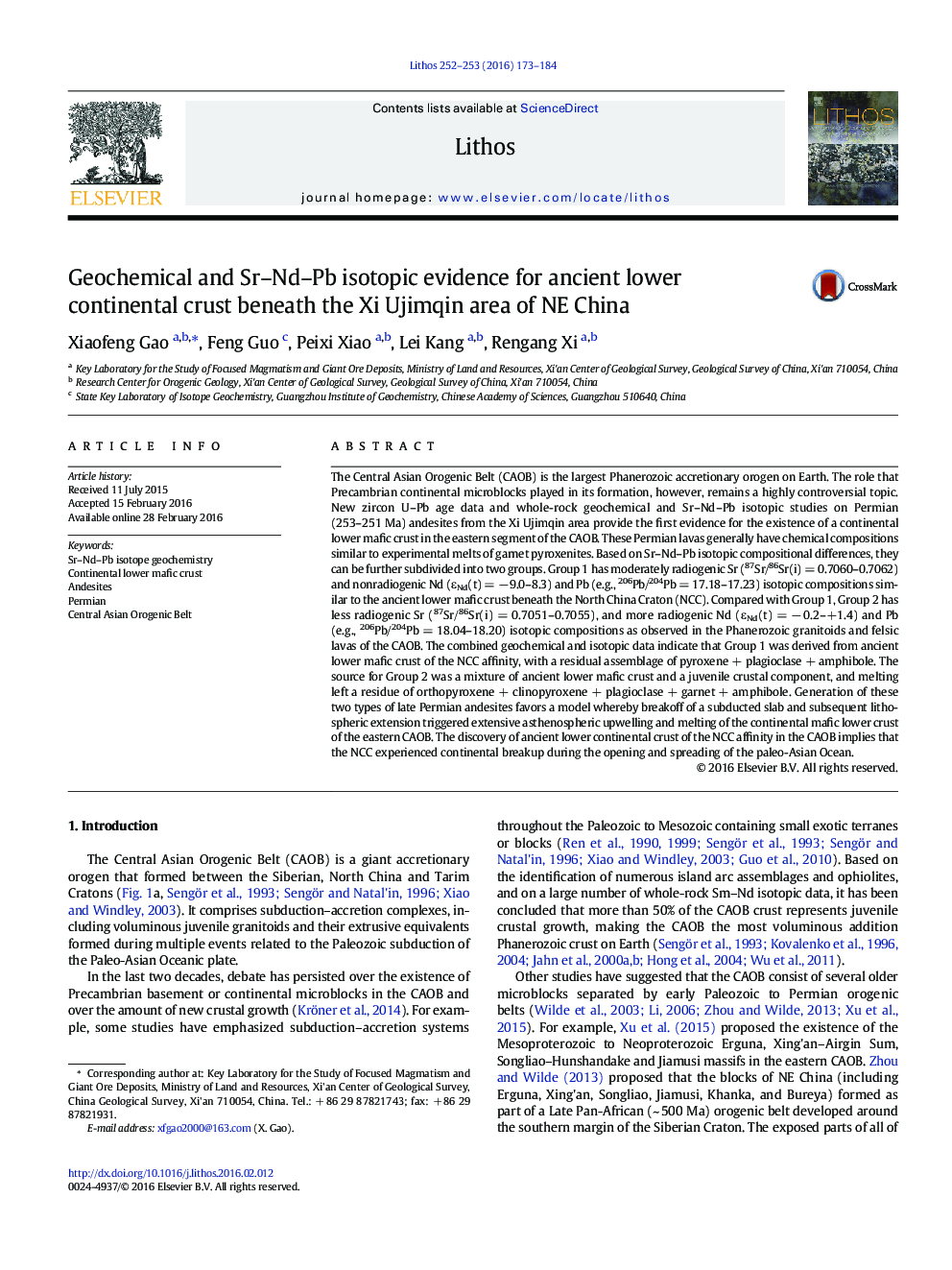| کد مقاله | کد نشریه | سال انتشار | مقاله انگلیسی | نسخه تمام متن |
|---|---|---|---|---|
| 4715583 | 1638648 | 2016 | 12 صفحه PDF | دانلود رایگان |

• Petrogenesis of andesites in the eastern segment of the CAOB (253–251 Ma)
• Two andesites were into a post-subduction setting.
• The discovery of ancient lower continental crust of NCC affinity in the CAOB
The Central Asian Orogenic Belt (CAOB) is the largest Phanerozoic accretionary orogen on Earth. The role that Precambrian continental microblocks played in its formation, however, remains a highly controversial topic. New zircon U–Pb age data and whole-rock geochemical and Sr–Nd–Pb isotopic studies on Permian (253–251 Ma) andesites from the Xi Ujimqin area provide the first evidence for the existence of a continental lower mafic crust in the eastern segment of the CAOB. These Permian lavas generally have chemical compositions similar to experimental melts of garnet pyroxenites. Based on Sr–Nd–Pb isotopic compositional differences, they can be further subdivided into two groups. Group 1 has moderately radiogenic Sr (87Sr/86Sr(i) = 0.7060–0.7062) and nonradiogenic Nd (εNd(t) = − 9.0–8.3) and Pb (e.g., 206Pb/204Pb = 17.18–17.23) isotopic compositions similar to the ancient lower mafic crust beneath the North China Craton (NCC). Compared with Group 1, Group 2 has less radiogenic Sr (87Sr/86Sr(i) = 0.7051–0.7055), and more radiogenic Nd (εNd(t) = − 0.2–+1.4) and Pb (e.g., 206Pb/204Pb = 18.04–18.20) isotopic compositions as observed in the Phanerozoic granitoids and felsic lavas of the CAOB. The combined geochemical and isotopic data indicate that Group 1 was derived from ancient lower mafic crust of the NCC affinity, with a residual assemblage of pyroxene + plagioclase + amphibole. The source for Group 2 was a mixture of ancient lower mafic crust and a juvenile crustal component, and melting left a residue of orthopyroxene + clinopyroxene + plagioclase + garnet + amphibole. Generation of these two types of late Permian andesites favors a model whereby breakoff of a subducted slab and subsequent lithospheric extension triggered extensive asthenospheric upwelling and melting of the continental mafic lower crust of the eastern CAOB. The discovery of ancient lower continental crust of the NCC affinity in the CAOB implies that the NCC experienced continental breakup during the opening and spreading of the paleo-Asian Ocean.
Journal: Lithos - Volumes 252–253, May 2016, Pages 173–184